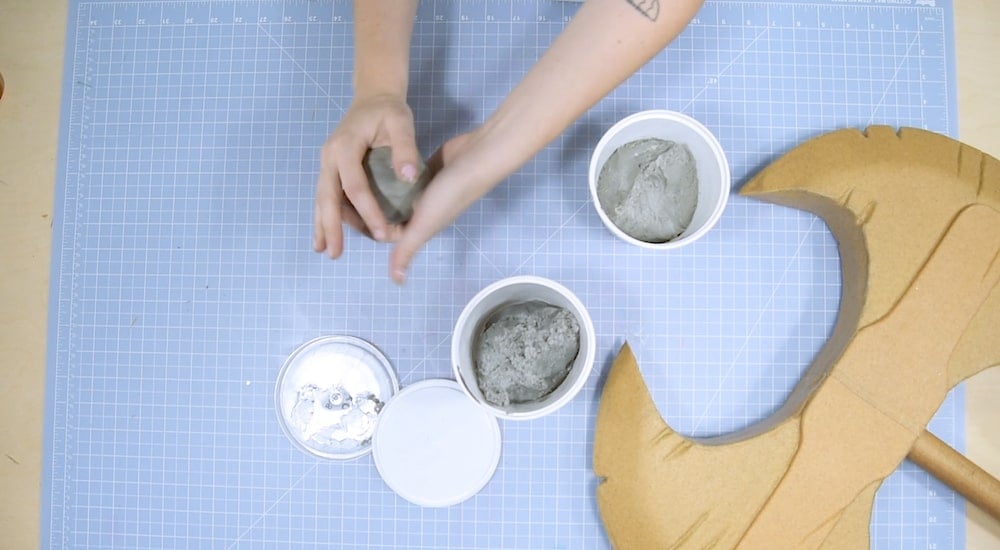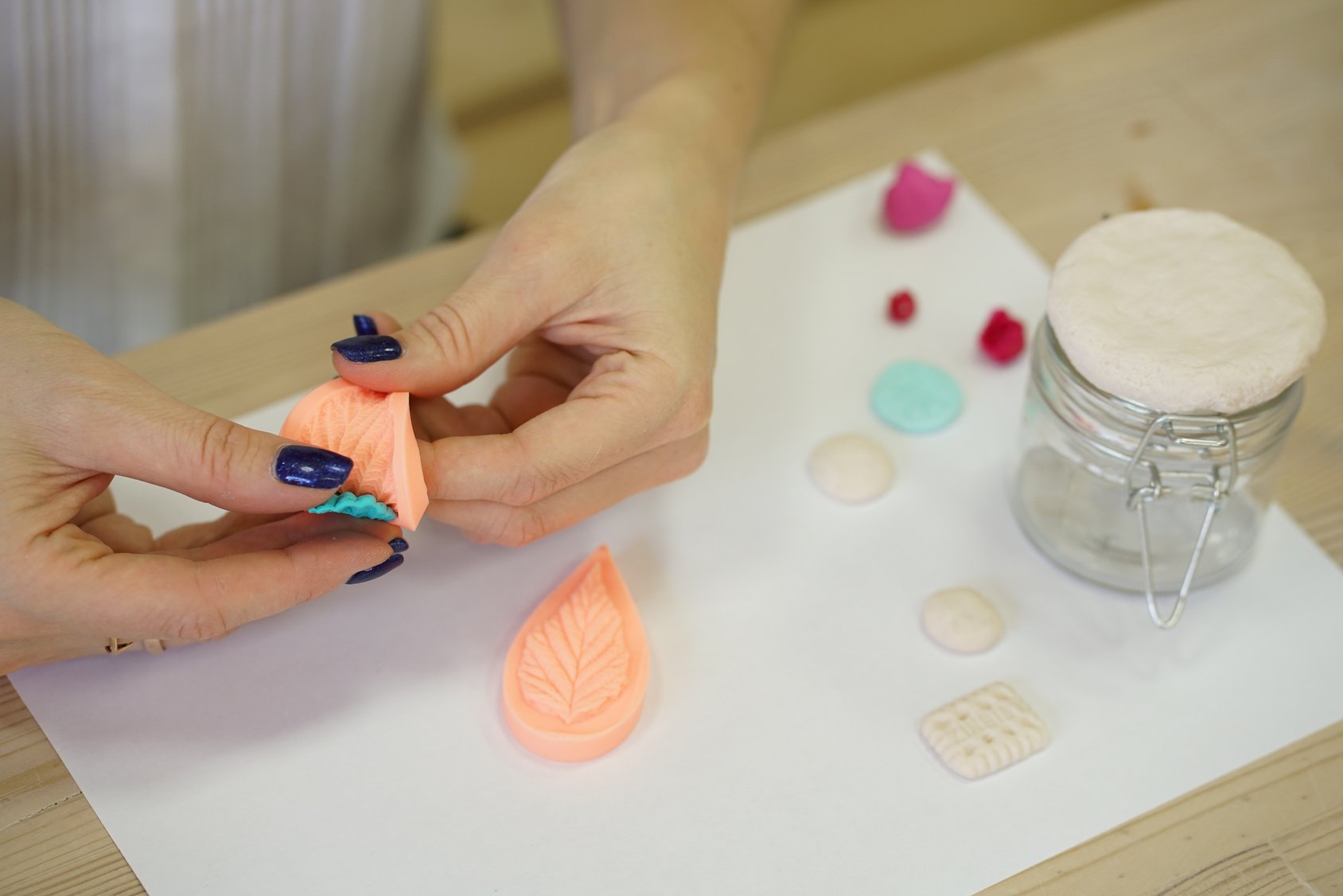Cosplay is definitely an art form — but you probably already knew that. Many of the most impressive cosplays are the result of a combination of several different art and craft techniques coming together. For the 3D elements of your cosplay, one of the most popular techniques out there is sculpting with clay. But where do you even get started with clay for cosplay?
Cosplayers use several different types of clay to achieve different results depending on the needs of their characters and designs. In this post, we’ll discuss the basics of cosplaying with clay including the different types and best uses for each.
Popular Types of Clay for Cosplay
Epoxy clay

Most epoxy clays are better known by their brand names, like Apoxie Sculpt or Magic Sculpt. These clays are similar in their characteristics, as they’re both types of epoxy clay. Epoxy clays are popular in cosplay because they’re moldable like clay but with the adhesive properties of an epoxy.
Epoxy clays come in two parts that are mixed together in equal amounts to create the compound. Once the two parts are kneaded and mixed to a consistent color, you’re ready to start molding and sculpting your design. Because epoxy clays are air-hardening, you have to work somewhat quickly before they start to dry, typically between 1-3 hours after mixing. Epoxy clay is also paintable.
Because of its properties, there are a few ways to sculpt with epoxy clay. First, you can fully sculpt your design or item out of the clay and leave it to harden on wax paper that you can pull it off of later. You can also cover a base material, like foam, paper, or aluminum foil with your clay in order to bulk out your design without wasting clay. Additionally, because it’s an epoxy, the clay will adhere automatically to hard surfaces like wood, metal, or plastic, so you can sculpt your clay directly onto other cosplay elements like masks, armor, weapons, and more.
Some of the challenges of epoxy clay are that it does have a working time limit once it’s mixed, and if you mix up too much at once, you’ll have to use it or lose it. It can get messy and bond to your cosplay or work surfaces if you don’t remove it before it dries. It can also be a little costly, but an order should last you a pretty long time.
Polymer clay

Polymer clay is popular as a crating medium in its own right, but it can be a great option for cosplayers that want to put a lot of effort into the little details of their costumes and props. Polymer clay is a synthetic modeling material that is hardened by oven baking. Some of the most popular polymer clays are Sculpey and FIMO.
Because polymer clay needs to be baked in order to harden, it’s great for making small details and embellishments for your cosplay and props. Things like jewelry, buttons, small crests and emblems, and gems are among the items that are commonly made from polymer clay. The clay comes in an incredibly wide range of colors as well as clear, but you can also paint on hardened polymer clay. The clay is soft and blendable and won’t begin to harden until you bake it.{{cta(‘3698bbd9-607d-4365-b560-16b472ca9c34’)}}
As far as challenges go, polymer clay is more brittle than other types of clay after baking, so it can be more prone to breaks and cracks. It can also be tricky to prevent fingerprinting when sculpting. Finally, with polymer clay, you’re limited to sculpting pieces that are small enough to fit in your oven.
Foam clay
Foam clay is a newer addition to the cosplay market, and it has a lot of unique properties that contributed to its popularity. In terms of consistency, foam clay is the most dough-like clay on our list. It’s incredibly soft and lightweight, and the real draw of foam clay is that when it air hardens, it takes on the texture of EVA foam and can build almost seamlessly onto foam.
After a little kneading to soften up the clay, you can either freely sculpt with foam clay or press it into a mold. Adding just a little water to your foam can help you smooth it out, but the other draw of foam clay is that it can pick up small texture details very well. Once hardened, foam clay can be treated exactly as you’d treat EVA: it can be sanded down, sealed, painted, and adhered to other materials.
The biggest challenge with foam clay is that as you carve, it can tend to “bounce back” because it’s so light and spongy. You may have to press a little harder with carving tools to make the impressions you want. You also need to be especially careful about sealing foam clay back up, as it will dry out if air gets into the bag/container.
Monster clay
Finally, Monster Clay is a brand of modeling clay specially created for costuming and special effects. Monster clay is a heavier clay, but its most notable feature is that it’s heat-activated and can be reused if re-heated.
Monster Clay arrives in the package as a hardened compound. To soften it into a moldable putty, you can bake it, microwave it, or hit it with a heat gun. Monster clay hardens when it cools, but because of its heat properties, it doesn’t harden quite as much as standard modeling clay. It’s still sturdy enough to withstand breakage at the same time. This makes it a great option for making molds that can be heated down and reused once you’re done with them. There are different grades of hardness to choose from as well.
The challenge with Monster Clay is that it can be difficult to transport or wear in warm weather or locations because the clay will reactivate in the sun/heat. It can be a little expensive to purchase if you’re not going to reuse the clay, but if you do get multiple uses out of it, you might find the price worth the function.
Using Clay in Your Cosplay or Prop
There are even more clay types to choose from other than these options we’ve listed depending on what you need for your cosplay. The features and processes you’re looking for will determine the best clay for any project. Whichever clay you choose, there are some situations where clay might make the best material choice for cosplay and props in general.
Most generally, clay is a great option for “sculptural” elements of your cosplay that would be difficult to articulate with another medium. Clay allows you to get around the entire 3D space of your item or element, sculpting its full shape with your hands or your tools. Sometimes, if you have a reference image or a sketch, you can also sculpt your piece to size directly on top of that image. If you need an item or element with dimension, especially if its a smaller object, clay can be a helpful choice.
However, clay can also be used in some less-traditional ways to add detail and refinement to your cosplay and props as well. Clay can be used in some cases to fill gaps in other materials, like seams in foam or holes in thermoplastic. You can also use clay as only an outer layer, covering a core that you’ve made out of something like foam or aluminum foil. Either way, adding sculptural, 3D elements to your cosplay with clay can really bring the best details of your design to life.